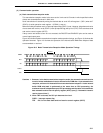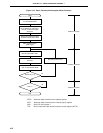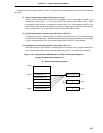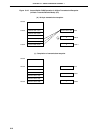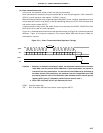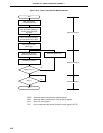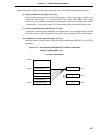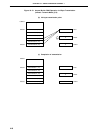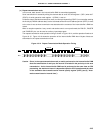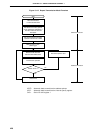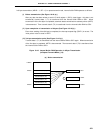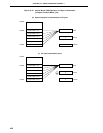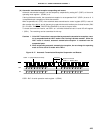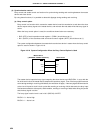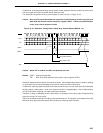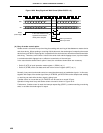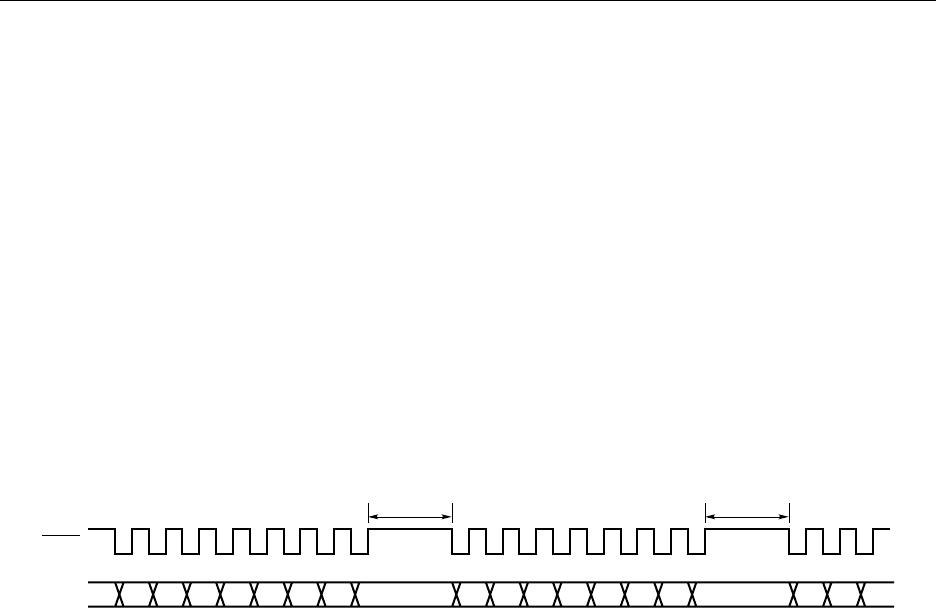
419
CHAPTER 18 SERIAL INTERFACE CHANNEL 1
(c) Repeat transmission mode
In this mode, data stored in the internal buffer RAM is transmitted repeatedly.
Serial transmission is started by writing the desired data to serial I/O shift register 1 (SIO1) when bit 7
(CSIE1) of serial operation mode register 1 (CSIM1) is set at 1.
Unlike the case of the basic transmission mode, an interrupt request flag (CSIIF1) is not set after sending
the final byte (FAC0H address data), but the auto data send and receive address pointer (ADTP) is reset
to the value it was at when transmission was started and the contents of the internal buffer’s RAM are
resent.
When a reception operation, busy control and strobe control are not performed, the P20/SI1, P23/STB
and P24/BUSY pins can be used as ordinary input/output ports.
The repeat transmission mode operation timing is shown in Figure 18-14, and the operation flowchart in
Figure 18-15. Figure 18-16 shows the operation of the internal buffer RAM when 6 bytes of data are
transmitted in the repeat transmission mode.
Figure 18-14. Repeat Transmission Mode Operation Timing
D7 D6 D5 D4 D3 D2 D1 D0 D7 D6 D5 D4 D3 D2 D1 D0
Interval Interval
D7 D6 D5
SCK1
SO1
Caution Since, in the repeat transmission mode, a read is performed on the internal buffer RAM
after the transmission of one byte, the interval is included in the period up to the next
transmission. As the internal buffer RAM read is performed at the same time as CPU
processing, the maximum interval is dependent upon the CPU operation and the value
of the automatic data transmit/receive interval specify register (ADTI) (see (5) "Auto-
matic transmit/receive interval time").



